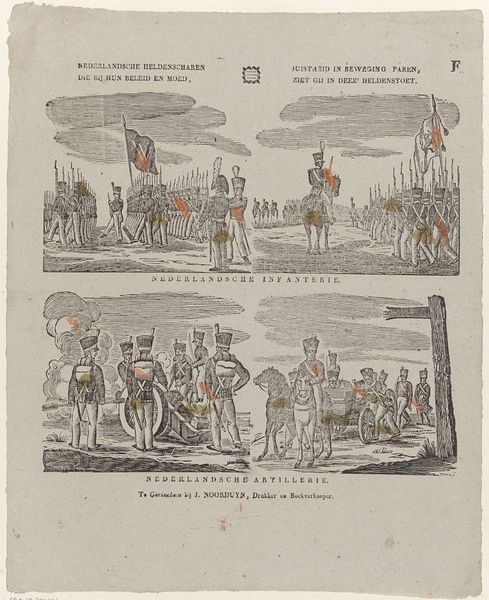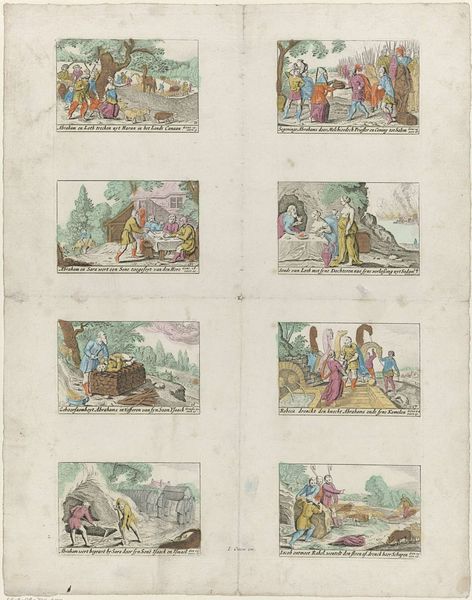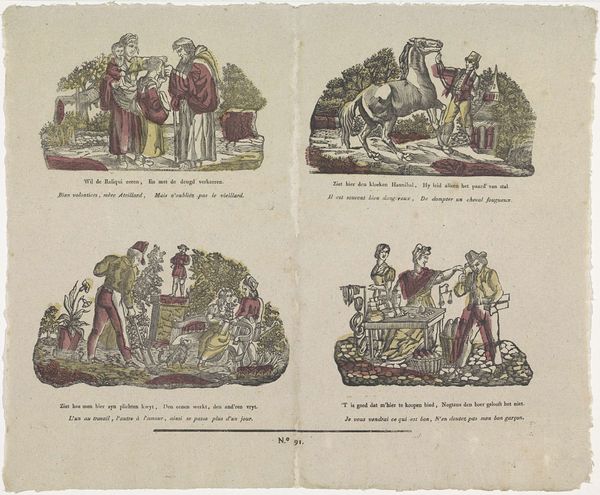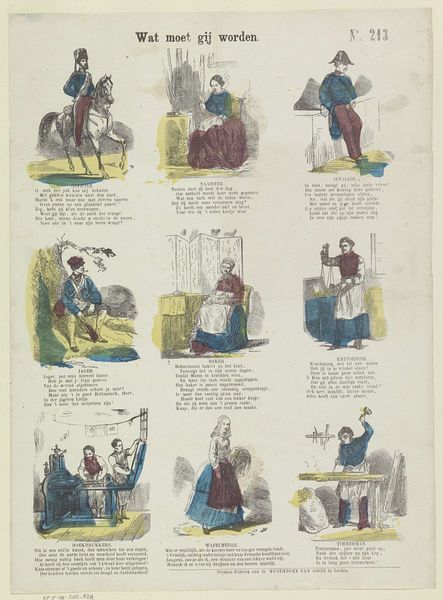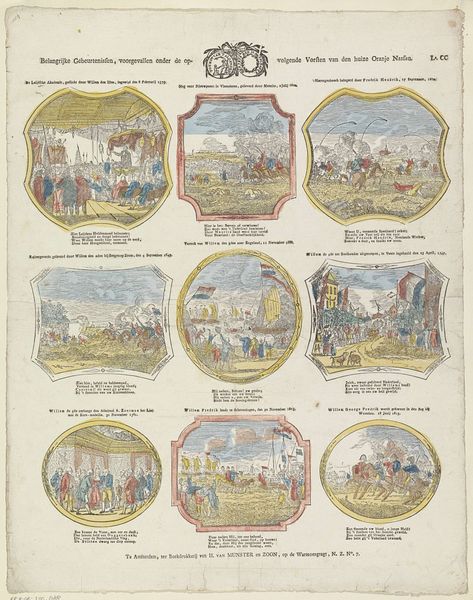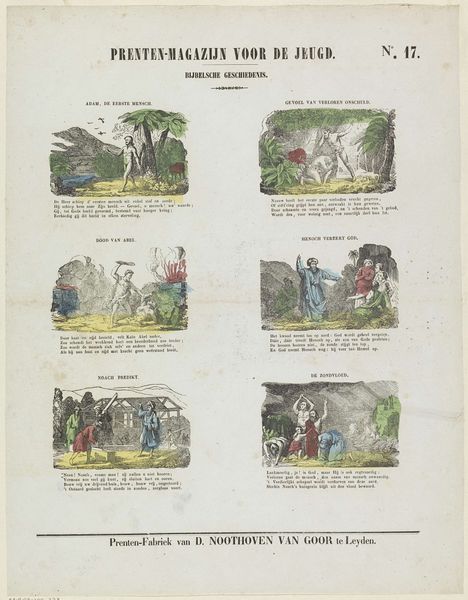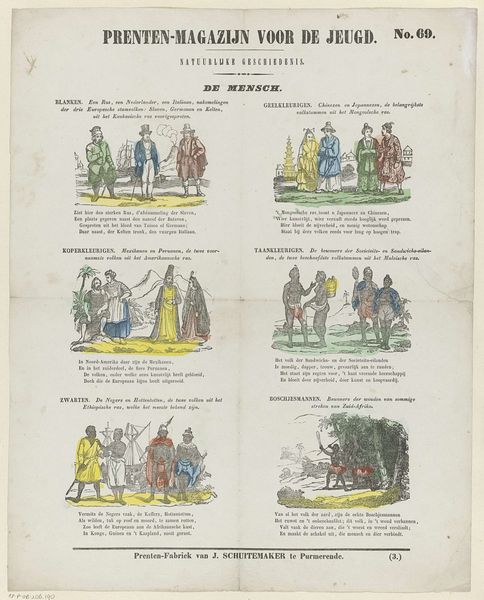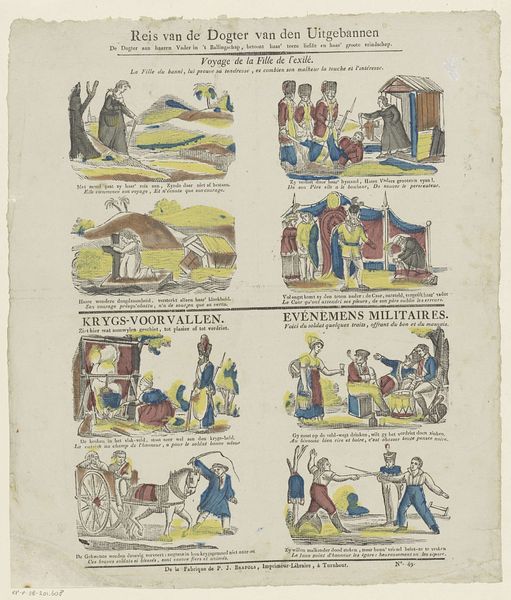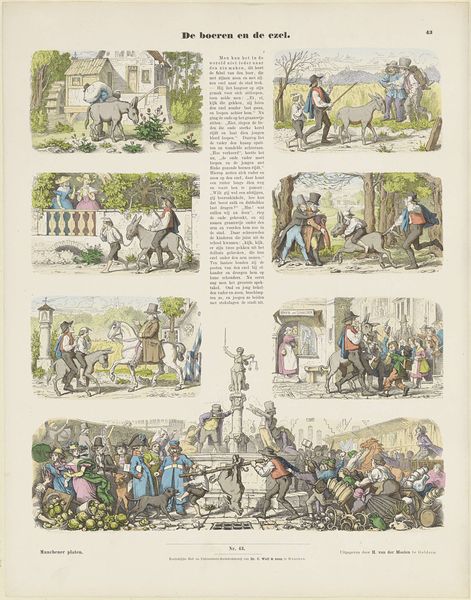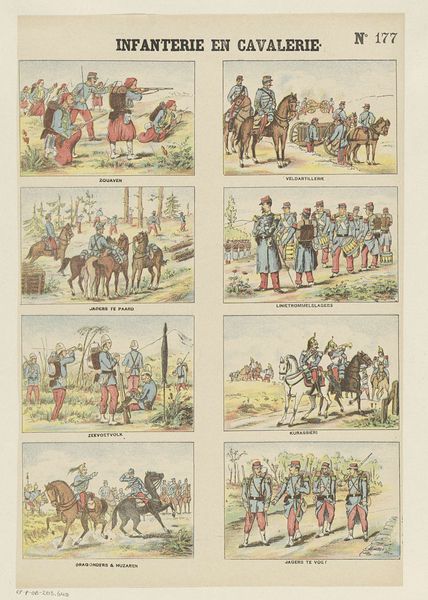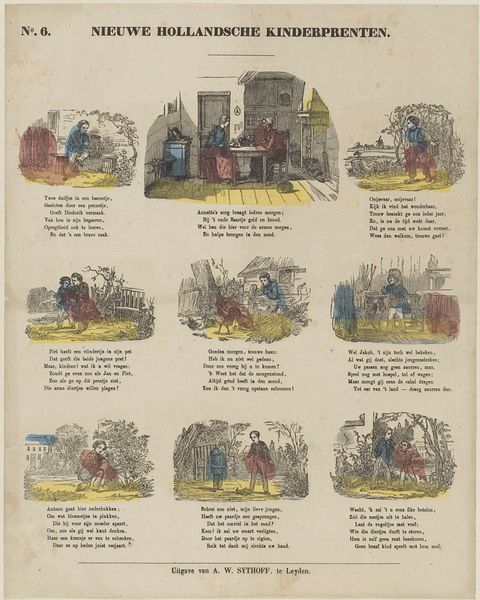
drawing, lithograph, print, paper, ink
#
drawing
#
narrative-art
#
lithograph
# print
#
paper
#
ink
#
romanticism
#
genre-painting
Dimensions: height 396 mm, width 325 mm
Copyright: Rijks Museum: Open Domain
Curator: Glenisson and Van Genechten's "Nouvel alphabet militaire / Nieuw militaire alphabeth," created between 1833 and 1856, offers a curious glimpse into military life represented in a childlike visual language. Editor: It strikes me as almost dreamlike, in the way it flattens the seriousness of military themes. The figures and scenes, though seemingly depicting aspects of army existence, carry a surprisingly gentle, naive quality, like a storybook illustration turned sociopolitical commentary. Curator: Yes, the image seems like a military primer but also transcends straightforward didacticism. This work employs a romantic style—evident in the idealization of everyday life that can carry strong nostalgic connotations and an implied narrative for each letter. It offers this as part of a genre painting, blending instruction with artistic license. Editor: I notice a tension inherent in an "alphabet" for military life that, even when meant to instruct, inevitably hints at the violence and order required in wartime. Does each scene underscore discipline and hierarchy, reinforcing certain ideologies of power? I wonder who its intended audience was; it reads as though there are social critiques, considering military power in public consciousness and broader intersectional narratives. Curator: Potentially. I think the appeal comes from the symbols: for instance, the figures atop the page present the "cyfers chiffres"—digits, where number seems personified. Or the "klinkers voyelles"—vowels where 'A' introduces Algeria: Each is embedded with meanings that shape a cultural understanding of military power. Editor: It’s fascinating how they translate abstraction into approachable visual metaphors, creating symbolic relationships to war through relatable vignettes. By distilling such a vast, complex institution to small visual units and relatable narratives, does this reinforce or demystify military life? Curator: It is a reminder that symbolic visual languages, be it allegories, signs, or narratives, work on multiple layers. There is what it seems to represent—an alphabet, teaching aid. Then there's what its historical context lends it—sociopolitical reflections. Editor: Exactly! So much to contemplate how visual information transmits value-laden lessons. Curator: I appreciate the nuanced reminder of layers beyond visual. Editor: And how our interpretations shift in dialogue across history.
Comments
No comments
Be the first to comment and join the conversation on the ultimate creative platform.


